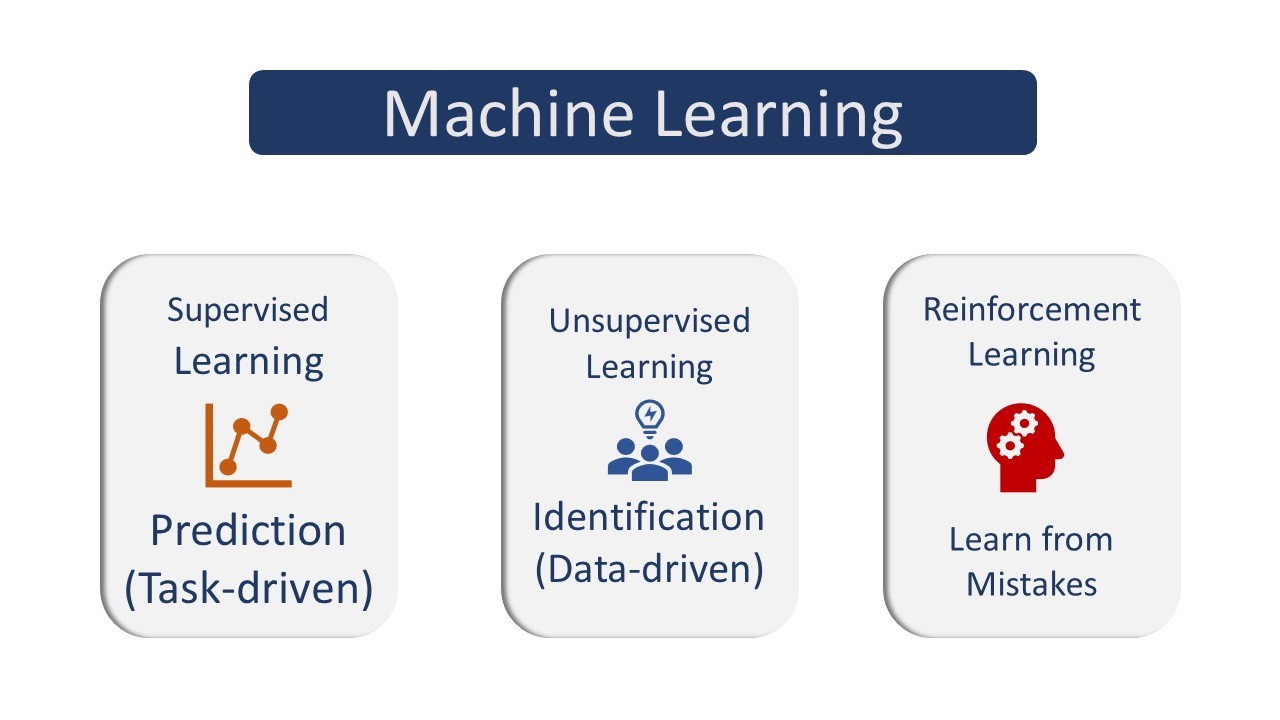Introduction
In 1959, Arthur Samuel defined machine learning as the field of study that gives computers the ability to learn without being explicitly programmed. But it seems an informal definition of machine learning.
Tom Mitchell provided more modified form of definition of Machine Learning:
"A computer program is said to learn from experience E with respect to some class of tasks T and performance measure P, if its performance at tasks in T, as measured by P, improves with experience E."
- Tom Mitchell
What is Machine Learning?
Machine learning is a subset of artificial intelligence. In which computers analyze data, find hidden data patterns or relationships, and try to extract information to crack relations and provide insights.
For humans, it is very hard to write the complicated programmed algorithms but through machine learning, computers or gadgets learn and improve from experience without being explicit programmed.
It has various applications such as Image Processing, Data Mining, Healthcare, Video Games, Robotics, Finance and Text Analysis.
How does Machine Learning work?
Usually, whenever someone introduces himself/herself with machine learning, this question becomes generic.
Machine learning system finds hidden data patterns from historical datasets, makes the prediction models, and helps to bring output value of input values.
Let’s understand each step one-by-one.
Machine learning system finds hidden data patterns or relationships between dependent and independent variables from several historical datasets of different types of datatypes, and in different forms including big data (audio, video and images).
Where datatypes refer to continuous-numerical, discontinuous-numerical, categorial, ordinal datatypes.
After learning from past historical datasets, machine learning builds predicting or forecasting models.
And we unknown data points are introduced to these prediction models, it gives outputs according to the hidden relations between input and output.
Types of Machine Learning
Machine learning can be categorized into three parts on the basis of its nature of learning, which are as follows-

Supervised Learning
Supervised learning provides power tool to classify and process data using machine language.
In supervised learning, using labelled data (dataset has features or labels), supervised machine learning algorithms predict the classification of other unlabelled data.
It is the easiest paradigm of machine learning to understand and simplest to implement.
It can be classified into two subcategories:
Unsupervised Learning:
Unsupervised learning is the second subcategory of machine learning.
In which machines deal with unlabeled and unclassified datasets which are used to train the algorithm. In unsupervised learning, the algorithms explore, try to identify some hidden patterns or structures within the data.
The role of machine is grouping the unsorted data on the basis of similarities, differences and patterns without any previous training.
There are mainly three types of Unsupervised Learning:

Reinforcement Learning
Reinforcement learning is a subcategory of machine learning in which software take actions in an environment in order to maximize the notion of cumulative rewards and punishments.
In layman language, it involves models to learn from its past mistakes and then the machine tries to correct it in the next iteration.
It is used in Robotics, Business, Gaming, Navigation, Data processing, creating training systems and aviation. Reinforcement learning has three main components,
- Agent
- Environment
- Action
There a lot of algorithms within Reinforcement learning, which are applied in different domains, some of them are Q-Learning, Deep Q Network, Policy Gradient and Markov Decision Process.
Semi-Supervised Learning
Semi-Supervised Learning is the fourth type of machine learning, which deals with both types of raw data, labelled and unlabeled data.
In layman language, Semi-Supervised Machine Learning is the hybrid of Supervised and Unsupervised learning which consist small amount of labelled data and significant amount of unlabeled data respectively.
It is very useful with compare to Supervised learning because the process of labelling datasets is a time-consuming process and expensive.
While on the extra hand it consists the possibilities of emotional biasing too. It can use each type of method such as classification, regression and prediction.
Applications of Machine Learning
There are several applications of machine learning within various industries, it can be Automobile industry, Entertainment industry, digital product industries, IT, Finance, FinTech, and Healthcare etc.
Here some applications are given with their real-life examples:
- Automation in Automobiles: Real-life examples are Tesla, Google, Apple, and their automotive revolutionary technologies for automobiles.
- Recommendation System: Mostly in digital products or software such as Google’s ads, Netflix, Amazon & Amazon Prime, YouTube, and other applications.
- Email Spam Detection: Used in G-mail
- Image Recognition: Cyber Security services, or detective agencies.
- Trading Apps: Lots of apps such as Zerodha, Upstox, and other stock, cryptocurrencies & forex trading apps.
- Fraud-detection: Financial services, Insurance companies, FinTech companies.
- Speech Recognition: Google voice
- Automotive Language Translation: Google Translator
Powered by Froala Editor



